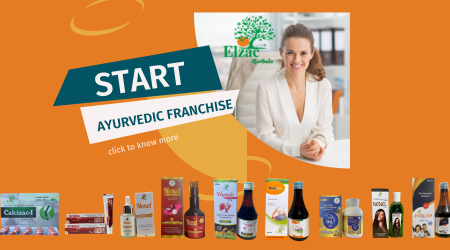Read: Licenses and requirements for starting cosmetic manufacturing unit
The following equipment, area and other requirements are recommended for the manufacture of: −
Powders: Face powder, cake make-up, compacts, face packs, masks and rouges, etc.
Cream and Ointments: Creams, lotions, emulsions, pastes, cleansing milks, shampoos, pomade, brilliantine, shaving creams and hair-oils etc.
Nail Polishes and Nail lacquers:
Lipsticks and Lip-gloss, etc.
Depilatories:
Preparations used for Eyes:
The following equipment, area and other requirements are recommended for the manufacture of: −
Powders: Face powder, cake make-up, compacts, face packs, masks and rouges, etc.
- Powder mixer of suitable type provided with a dust collector. (b) Perfume and colour blender.
- Sifter with sieves of suitable mesh size. (d) Ball mill or suitable grinder.
- Trays and scoops (stainless steel).
- Filling and sealing equipment provided with dust extractor.
- For compacts: - (i) a separate mixer, (ii) compact pressing machine.
- Weighing and measuring devices
- Storage tanks.
Cream and Ointments: Creams, lotions, emulsions, pastes, cleansing milks, shampoos, pomade, brilliantine, shaving creams and hair-oils etc.
- Mixing and storage tanks of suitable materials.
- Heating kettle – steam, gas or electrically heated.
- Suitable agitator.
- Colloidal mill or homogeniser (wherever necessary).
- Triple roller mill (wherever necessary).
- Filling and sealing equipment.
- Weighing and measuring devices.
Nail Polishes and Nail lacquers:
- A suitable mixer
- Storage tanks
- Filling machine – hand operated or power driven
- Weighing and Measuring devices
Lipsticks and Lip-gloss, etc.
- Vertical mixer
- Jacketted kettle – steam, gas or electrically heated
- Mixing vessel (stainless steel).
- Triple roller mill/Ball mill.
- Moulds with refrigeration facility
- Weighing and measuring devices
Depilatories:
- Mixing tanks
- Mixer
- Triple roller mill or homogeniser (where necessary)
- Filling and sealing equipment.
- Weighing and measuring devices
- Moulds (where necessary)
Preparations used for Eyes:
Such preparations shall be manufactured under strict hygienic conditions to ensure that these are safe for use.
1. Eyebrows, Eyelashes, Eyeliners, etc.
2. Kajal and Surma
Other requirements for 1 and 2:
Aerosol:
Alcoholic Fragrance Solutions:
Hair Dyes:
Tooth powders and toothpastes, etc:
1. Tooth-powder in General:
2. Toothpastes:
3. Tooth-powder (Black) Equipment:
Toilet Soaps:
Read Related:
How to start Medical Store in India?
How to start distribution business in Pharmaceutical Sector?
Steps for starting Pharmaceutical manufacturing company.
21 steps involved in start Pharmaceutical Marketing Company.
1. Eyebrows, Eyelashes, Eyeliners, etc.
- Mixing tanks.
- A suitable mixer.
- Homogeniser (where necessary)
- Filling and sealing equipment.
- Weighing and measuring devices.
2. Kajal and Surma
- Base sterilizer.
- Powder sterilizer (dry heat oven)
- Stainless steel tanks.
- A suitable Mixer.
- Stainless steel sieves.
- Filling and sealing arrangements
- Weighing and measuring devices
- Homogeniser (where necessary)
- Pestle and Mortar (for Surma)
Other requirements for 1 and 2:
- False ceiling shall be provided wherever required.
- Manufacturing area shall be made fly proof. An airlock or an aircurtain shall be provided.
- Base used for Kajal shall be sterilized by heating the base at 150 degree C for required time in a separate enclosed area.
- The vegetable carbon black powder shall be sterilized in a drying oven at 120 degree C for required time.
- All utensils used for manufacture shall be of stainless steel and shall be washed with detergent water, antiseptic liquid and again with distilled water.
- Containers employed for ‗Kajal‘ shall be cleaned properly with bactericidal solution and dried.
- Workers shall put on clean overalls and use hand gloves wherever necessary
Aerosol:
- Air-compressor (wherever necessary)
- Mixing tanks
- Suitable propellant filling and crimping equipments
- Liquid filling unit
- Leak testing equipment
- Fire extinguisher (wherever necessary)
- Suitable filtration equipment
- Weighing and measuring devices
Alcoholic Fragrance Solutions:
- Mixing tanks with stirrer
- Filtering equipment.
- Filling and sealing equipment.
- Weighing and measuring devices.
Hair Dyes:
- Stainless steel tanks
- Mixer.
- Filling Unit.
- Weighing and measuring devices
- Masks, gloves and goggles
Tooth powders and toothpastes, etc:
1. Tooth-powder in General:
- Weighing and measuring devices
- Dry mixer (powder blender)
- Stainless steel sieves.
- Powder filling and sealing equipments
2. Toothpastes:
- Weighing and measuring devices.
- Kettle – steam, gas or electrically heated (where necessary). (c) Planetary mixer with de-aerator system.
- Stainless steel tanks
- Tube filling equipment
- Crimping machine.
3. Tooth-powder (Black) Equipment:
- Weighing and measuring devices
- Dry mixer powder blender
- Stainless steel sieves
- Powder filling arrangements
Toilet Soaps:
- Kettles/pans for saponification
- Boiler or any other suitable heating arrangement
- Suitable stirring arrangement
- Storage tanks or trays
- Driers
- Amalgamator/chipping machine
- Mixer
- Triple roller mill
- Granulator
- Plodder
- Cutter.
- Pressing, stamping and embossing machine.
- Weighing and measuring devices
Read Related:
How to start Medical Store in India?
How to start distribution business in Pharmaceutical Sector?
Steps for starting Pharmaceutical manufacturing company.
21 steps involved in start Pharmaceutical Marketing Company.

Comments
Post a Comment